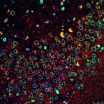(Press-News.org) Converging scientific evidence – not to mention a great deal of life experience – tells us that self-control is an important ability. It helps us keep our cool, get things done, and resist the things that tempt us. Scientists believe that gaining a clearer understanding of how self-control works could provide critical insights into addressing some of the large-scale problems facing society today, including obesity and addiction.
Numerous studies have found evidence for the idea of self-control as a limited resource, but emerging research suggests that this model may not tell the whole story. Research published in the journals of the Association for Psychological Science explores the various mechanisms – metabolic, cognitive, motivational, affective – thought to underlie self-control.
Motivational Versus Metabolic Effects of Carbohydrates on Self-Control
Daniel C. Molden, Chin Ming Hui, Abigail A. Scholer, Brian P. Meier, Eric E. Noreen, Paul R. D'Agostino, and Valerie Martin
We usually think of a sugary treat as something that taxes our self-control because we have to expend effort trying to resist it. But what if sweets could actually help to boost self-control? That's the basic gist behind the energy model of self-control. According to this model, self-control relies on carbohydrate metabolism; we deplete our carbohydrate stores as we exert self-control, making it more difficult to exert self-control until the stores are built up again. Psychological scientist Daniel Molden and his colleagues decided to test the energy model in a series of four experiments in which participants' baseline glucose levels were assessed prior to performing tasks that required self-control. The researchers found no evidence for a relationship between self-control and glucose metabolism. Follow-up studies indicated that participants who rinsed their mouths with a carbohydrate solution showed improved self-control, despite the fact that they didn't ingest the solution and there was no observable change in their blood glucose levels. These findings suggest a motivational as opposed to metabolic mechanism for self-control.
Corresponding author: Daniel C. Molden – Northwestern University – molden@northwestern.edu
Published in the October 2012 issue of Psychological Science
The Gargle Effect: Rinsing the Mouth with Glucose Enhances Self-Control
Matthew A. Sanders, Steve D. Shirk, Chris J. Burgin, Leonard L. Martin
In this article, psychological scientist Matthew Sanders and colleagues aim to clarify the debate over whether metabolic or motivational mechanisms underlie self-control. The researchers asked participants to engage in a task that required self-control; the participants then rinsed their mouths with either glucose or a non-glucose sweetener while they performed a second self-control task. The results of the study conceptually replicate those reported by Molden and colleagues. Participants who rinsed with the glucose sweetener demonstrated better self-control than those who rinsed with a non-glucose sweetener, despite the fact that there was not enough time for the glucose to actually be metabolized. These results provide additional evidence to suggest that glucose influences self-control through a non-metabolic route. The researchers speculate that glucose may activate brain areas involved in selecting and inhibiting action, as well as detecting errors and evaluating competing responses.
Corresponding author: Matthew Sanders – University of Georgia – sandersm@uga.edu
Forthcoming in Psychological Science
What Is Ego Depletion? Toward a Mechanistic Revision of the Resource Model of Self-Control
Michael Inzlicht and Brandon J. Schmeichel
Although self-control has traditionally been thought of as a limited resource that can be depleted, research on cognition, motivation, and affect has begun to challenge this picture. Inzlicht and Schmeichel review the existing research on self-control and propose an alternative model of self-control focused on process. This process model holds that our initial exertions of willpower lead our motivation to shift away from control and toward gratification. As a part of this process, our attention shifts away from cues that signal the need for control and toward cues that signal indulgence. Inzlicht and Schmeichel argue that the process model provides a starting point for understanding self-control and that more research examining these cognitive, motivational, and affective influences on self-control is needed.
Corresponding author: Michael Inzlicht – University of Toronto – michael.inzlicht@utoronto.ca
Published in the September 2012 issue of Perspectives on Psychological Science
###
Please contact Anna Mikulak at 202-293-9300 or amikulak@psychologicalscience.org for more information.
Take control! Exploring how self-discipline works and how we might boost it
2012-10-20
ELSE PRESS RELEASES FROM THIS DATE:
Salk scientists pinpoint key player in Parkinson's disease neuron loss
2012-10-20
LA JOLLA, CA---- By reprogramming skin cells from Parkinson's disease patients with a known genetic mutation, researchers at the Salk Institute for Biological Studies have identified damage to neural stem cells as a powerful player in the disease. The findings, reported online October 17th in Nature, may lead to new ways to diagnose and treat the disease.
The scientists found that a common mutation to a gene that produce the enzyme LRRK2, which is responsible for both familial and sporadic cases of Parkinson's disease, deforms the membrane surrounding the nucleus of a ...
Daily vibration may combat prediabetes in youth
2012-10-20
AUGUSTA, Ga. – Daily sessions of whole-body vibration may combat prediabetes in adolescents, dramatically reducing inflammation, average blood glucose levels and symptoms such as frequent urination, researchers report.
In mice that mimic over-eating adolescents headed toward diabetes, 20 minutes of daily vibration for eight weeks restored a healthy balance of key pro- and anti-inflammatory mediators and was better than prescription drugs at reducing levels of hemoglobin A1c, the most accurate indicator of average blood glucose levels, said Dr. Jack C. Yu, Chief of the ...
Disk galaxies formed gradually, astronomers find from images, computer simulations, and spectra
2012-10-20
Spectroscopic observations of distant galaxies taken with the 10-meter telescopes at the W. M. Keck Observatory on Hawaii, when combined with images taken by the Hubble Space Telescope plus supercomputer simulations to help interpret the observations, together reveal a major surprise: that a standard assumption about the evolution of galaxies is not correct.
Astronomers had thought that disk galaxies (like our own Milky Way) had largely finished forming by about 8 billion years ago, as indicated by the rates at which stars are formed in the Universe. Therefore, many astronomers ...
Science reveals the power of a handshake
2012-10-20
New neuroscience research is confirming an old adage about the power of a handshake: strangers do form a better impression of those who proffer their hand in greeting.
A firm, friendly handshake has long been recommended in the business world as a way to make a good first impression, and the greeting is thought to date to ancient times as a way of showing a stranger you had no weapons. Now, a paper published online and for the December print issue of the Journal of Cognitive Neuroscience on a study of the neural correlates of a handshake is giving insight into just ...
Dartmouth researchers explore how the brain perceives direction and location
2012-10-20
The Who asked "who are you?" but Dartmouth neurobiologist Jeffrey Taube asks "where are you?" and "where are you going?" Taube is not asking philosophical or theological questions. Rather, he is investigating nerve cells in the brain that function in establishing one's location and direction.
Taube, a professor in the Department of Psychological and Brain Sciences, is using microelectrodes to record the activity of cells in a rat's brain that make possible spatial navigation—how the rat gets from one place to another—from "here" to "there." But before embarking to go ...
NASA sees extra-large, now extra-tropical storm Prapiroon fading
2012-10-20
Prapiroon is both extra-large and now extra-tropical in the western North Pacific Ocean. NASA's Terra satellite captured an image of the large storm after Prapiroon became extra-tropical.
The Moderate Resolution Imaging Spectroradiometer (MODIS) instrument aboard NASA's Terra satellite captured a visible image of Extra-tropical Storm Prapiroon on Oct. 19 at 01:15 UTC (Oct. 18, 9:15 p.m. EDT). The storm appeared on the MODIS image to be as large as the main island of Japan and the strongest thunderstorms and heaviest rainfall appeared north of the center of circulation ...
Astronomers uncover a surprising trend in galaxy evolution
2012-10-20
VIDEO:
A study of 544 star-forming galaxies observed by the Keck and Hubble telescopes shows that disk galaxies like our own Milky Way unexpectedly reached their current state long after much...
Click here for more information.
A comprehensive study of hundreds of galaxies observed by the Keck telescopes in Hawaii and NASA's Hubble Space Telescope has revealed an unexpected pattern of change that extends back 8 billion years, or more than half the age of the universe.
"Astronomers ...
Cholera discovery could revolutionize antibiotic delivery
2012-10-20
Contact:
Lisa Craig (Burnaby resident), 778.782.7140, licraig@sfu.ca
Carol Thorbes, PAMR, 778.782.3035, cthorbes@sfu.ca
Photos on Flickr: http://at.sfu.ca/lutURE END ...
RIT professor studies connection between child, mother mortality
2012-10-20
The death of a child is a tragic event for a family, bringing with it feelings of numbness, anger, guilt and denial. And, unfortunately, for many families, the loss becomes too much to bear.
A new study co-conducted by a researcher at Rochester Institute of Technology uncovers the strong connection between the death of a child and the mortality of the mother, regardless of cause of death, gender of the child, marital status, family size, income or education level of the mother.
Javier Espinosa, assistant professor in RIT's College of Liberal Arts and an expert in health ...
Geosphere explores the Sierra Nevada, Colorado River system, Laurentia, and the deep sea
2012-10-20
Boulder, Colo., USA – Geosphere, The Geological Society of America's peer-reviewed online journal, has added papers to four special issues: Origin and Evolution of the Sierra Nevada and Walker Lane; CRevolution 2: Origin and Evolution of the Colorado River System II; Exploring the Deep Sea and Beyond; and Making the Southern Margin of Laurentia. Geosphere specializes in accommodating animations, sound, and movie files, along with high-resolution figures.
Abstracts for these and other Geosphere papers are available at http://geosphere.gsapubs.org/. Representatives of the ...



